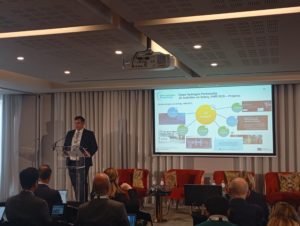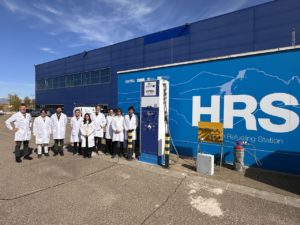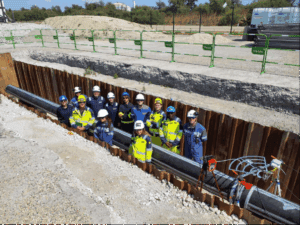OPTHYCS conducted its first round of tests to evaluate the performance of optical fibre for hydrogen (H₂) leak detection last June. NaTran R&I (formerly RICE) hosted experts from TECNALIA Surface Engineering, Enagás, LUMIKER Group LLC, and FEBUS Optics at the NaTran’s Jupiter 1000 facilities located near Marseille (France), aiming to evaluate the performance of the abovementioned technology.
These initial trials focused on assessing how optical fibre sensors perform under different conditions representative of aerial pipeline environments. The goal is to understand the system’s response in diverse operational scenarios and validate its reliability.
The results of these tests will be supplemented by the results obtained from tests carried out on a buried pipeline, which will be conducted this fall. The test bench was designed with small tubes that were added to simulate controlled leaks at different pressures. The fibre has been tested in pure hydrogen, but also in a mixture of natural gas and 20% H2.
This testing phase is fully aligned with the main ambition of OPTHYCS: to develop a new sensor technology that enhances the safety of hydrogen applications and helps minimise potential hydrogen releases, limiting the climate impact of H2 uptake.
Further testing and data analysis from previous tests will be carried out over the coming months, providing valuable insights for technology validation and future implementation. By the end of the project, scheduled for December 2025, NaTran R&I will analyse the results of the tests on Jupiter 1000 and other use cases from Enagás and Aragon Hydrogen Foundation tests.




